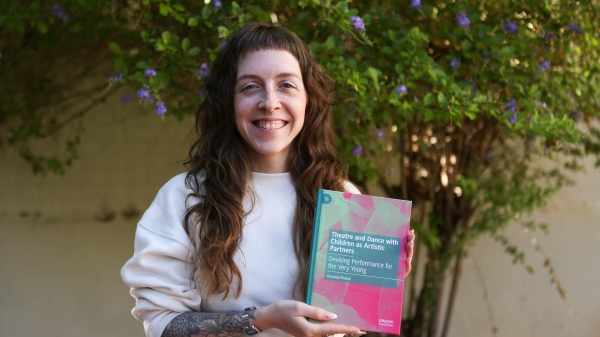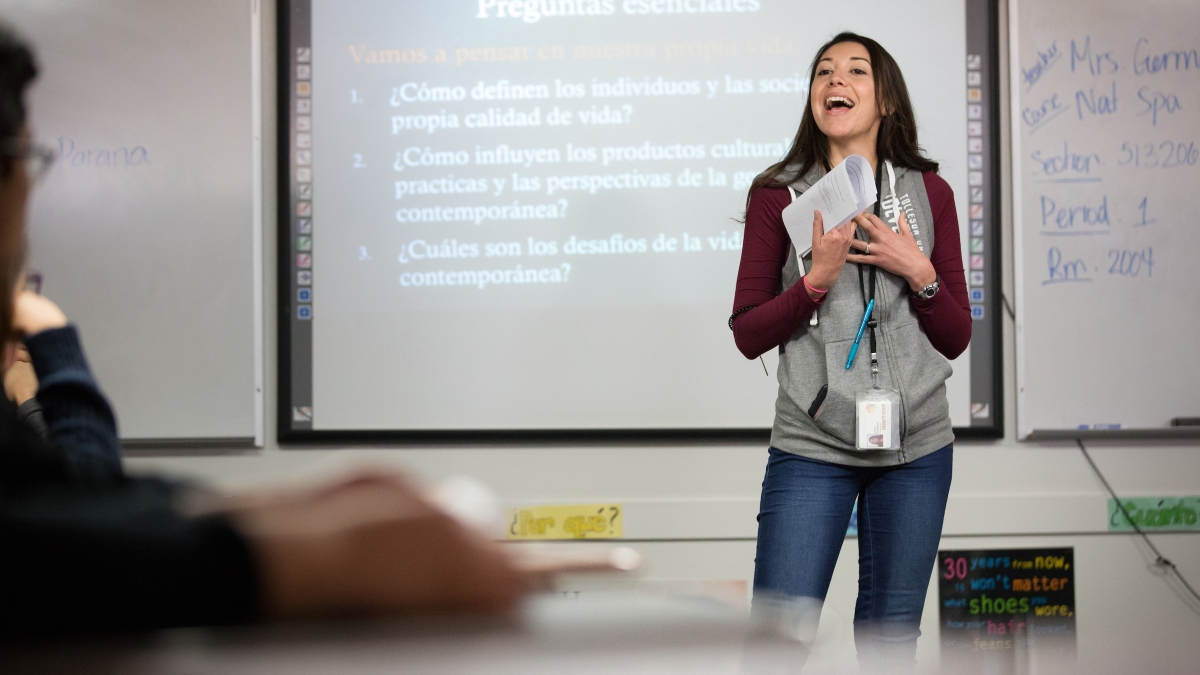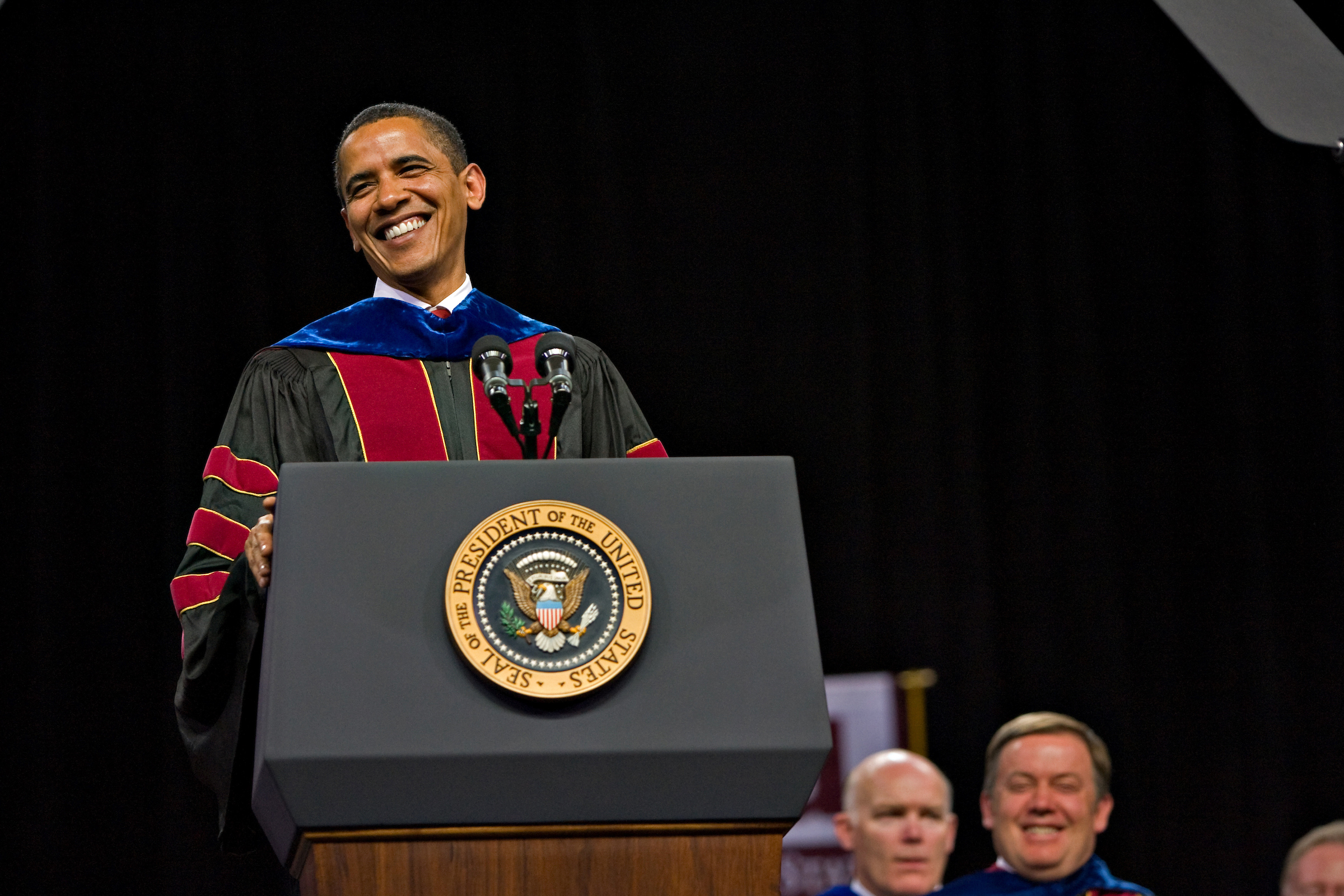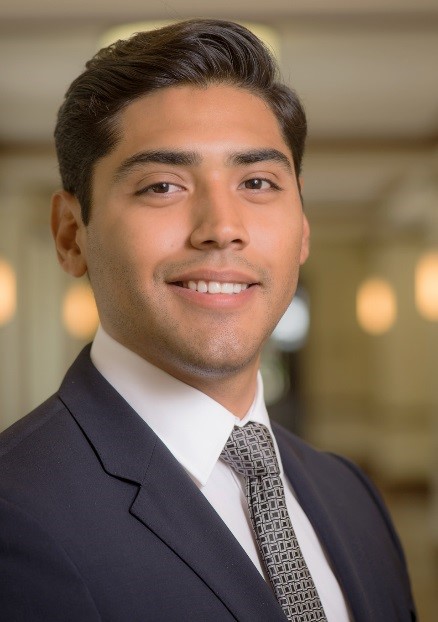They’re teachers, accountants, social workers and entrepreneurs. One is currently a Peace Corps volunteer in China, and another will graduate from medical school in May.
President Barack Obama’s visit to Arizona State University in 2009, less than a year after taking office, inspired a new scholarship program for low-income young people, and as his term draws to a close this week, nearly 2,300 ASU students have graduated as Obama Scholars.
To date, more than $200 million has been invested in these young Arizonans who, without the aid, might not have attended college.
“I was able to break that cycle of not having any opportunity,” said Sergio Rojas, whose family emigrated from Mexico when he was 4 years old. Now working for ExxonMobil while pursuing an MBA, Rojas was near the top of his class in high school but had no hope of higher education.
“The scholarship made all the difference,” he said.
More likely to succeed
ASU launched the President Barack Obama Scholars Program nearly eight years ago for Arizona high school graduates who qualified for acceptance as full-time freshmen, providing not only financial aidThe program pays for eight semesters of tuition, housing, books and supplies through a combination of federal, state, institutional and private money for students whose families earn $42,400 or less. Obama Scholars also earn money toward tuition through work-study. but also mentorship to help smooth the way.
Students who are Obama Scholars have been more likely to persistAbout 92 percent of Obama Scholars who started in fall 2015 returned for their sophomore in fall 2016, compared with 83 percent of the entire freshmen class. In the full-time freshmen cohort who started in fall 2011, 52 percent graduated within four years, compared with 46 percent for the entire class. to their sophomore year and to graduate.
In the current freshmen class of Obama Scholars:
- Three-quarters are Merit Scholars, and their average high school grade-point average is 3.5.
- The average household income is about $21,000, and nearly half are first-generation college goers.
- Nearly three-quarters are students of color.
- About 45 percent are pursuing degrees in science, technology, engineering or math fields.
President Barack Obama gave the commencement address at ASU in May 2009. Though his tenure at the White House ends this week, the Obama Scholars program will continue. Photo by ASU
The scholarship program — announced during the commencement ceremony before Obama’s speech — was ASU’s response to the president’s challenge for the U.S. to once again have the highest proportion of college graduates in the world by the year 2020.
“That notion of opening doors of opportunity to everybody — that is the core mission of this school. It’s a core mission of my presidency, and I hope this program will serve as a model for universities across this country,” Obama said during his address.
Alex Butler, a freshman history major and Obama Scholar at ASU, said that as an African-American, he finds the program is especially meaningful.
“I’m a big fan of President Obama, and I know that when my mother was growing up, it wasn’t even a thought that there would be an African-American president, and now I have a scholarship with his name on it,” said Butler, who wants to be a teacher.
“I’m going to try to live my day helping people as much as I can.”
Someone to cheer
Navigating a big university can be overwhelming, which is why the program assigns faculty or upperclassmen as mentors for freshmen.
Duane Roen, vice provost of the Polytechnic campus, was a mentor for several students a few years ago and met with them regularly to check in.
“We talked about how they were doing in every way that a student needs to think about — academically, financially and emotionally. We talked about the full range of wellness,” said Roen, who also is dean of the College of Integrative Sciences and Arts and of University College.
Butler said that he got a lot of help transitioning to college from his mentor, James Rund, the senior vice president of Educational Outreach and Student Services.
“He helped me to feel that I’m not left behind and that there’s always someone cheering me on,” Butler said.
“He’s given me a lot of advice on things to get involved with, and from that I applied to become a community assistant in the residence halls next year, and I also got involved with the Undergraduate Student Government,” he said.
Roen, a professor of English, said that working with the scholars was fulfilling.
“I frequently talk to student groups and I tell them of all of the things in my academic career, nothing gives me greater happiness, joy and satisfaction than to see a student succeed.”
'There was something wrong'
For Rojas, who graduated from ASU in 2013, the scholarship was the second of two miracles that opened the door to higher education.
Sergio Rojas was able to attend ASU after qualifying at the last minute for an Obama scholarship.
Rojas’ family were undocumented immigrants, working odd jobs. Eventually, his father found work as a plumber and the family settled in the West Valley.
With no insurance, health care usually meant a trip to a clinic paid with cash. So when his mother began having stomach pains, the clinic staff told her to cut out spicy food. But when the pain became worse, they took her to the emergency room, where surgery revealed she had cancer. She died a few months later, just a few weeks after Sergio had finished eighth grade.
Rojas was motivated by his mother’s death to study hard in high school. But while he earned A's, the reality of his situation dawned on him.
“For a long time, I wasn’t sure what my legal status meant. My dad kind of kept it away from me. When I was in high school, I realized what my identity was, and that there was something wrong. You couldn’t tell people about it because you might get in trouble,” he said.
In the meantime, Rojas' father married a woman who is a citizen, and didn’t tell his sons that he had started the complicated process of trying to acquire legal status for them.
Rojas graduated from Buckeye Union High School in May 2009, fourth in his class with a 4.3 grade-point average and little opportunity. He was told that without documentation, he should look for work in the fields. He had spoken with a financial-aid officer at ASU but learned that his status meant he couldn’t qualify for financial aid.
But in June, a letter arrived from the State Department, notifying him that he had been granted legal status. The problem was that it was too late for most universities. Except ASU.
He called the financial-aid counselor, who worked to get him into the brand-new Obama Scholars program.
“She told me she would do whatever she could to help me, and she gave me information in Spanish to give to my family,” Rojas said. “For my father, it meant he didn’t have to stress anymore about paying for college.”
Rojas graduated with a degree in supply chain management in 2013 and now is a site materials associate for ExxonMobil and is pursuing his MBA at Rice University.
“Without that scholarship, it would have been a very different story,” he said.
An amazing four years
For Diana German, the scholarship meant an immersive college experience.
German’s older sister commuted from the family’s Glendale home to ASU’s Tempe campus, an hour each way. When German graduated from Glendale High School in 2010, she had scholarships to help pay tuition, but she was facing that commute as well.
“I remembering touring ASU in high school and going to the dorms and saying, ‘I want to live here’ — but I knew it was impossible. I had to be happy to get my classes paid for,” said German, who graduated with a degree in secondary education in 2014 and is now a Spanish teacher at Tolleson Union High School.
German’s family was hit hard by the recession, and when she got the Obama scholarship, she realized she could fulfill her dream of living in the dorms, which she did for all four years.
“I tell my students it was the most amazing four years of my life, and I wouldn’t have been involved in so many things had I not lived on campus,” said German, who was in intramural tennis, Devil DanceSport and Adelante, a group for Latino students.
German has an ASU poster on her classroom wall and tells her students they can reach for college.
“I tell them that there are so many opportunities out there for them.”
Top photo: Diana German, an ASU alumna and Obama scholarship recipient, teaches the Advanced Placement Native-Speaker Spanish class at Tolleson Union High School. German was an Obama Scholar while at ASU. Photo by Anya Magnuson/ASU Now
More Arts, humanities and education

Exhibit to feature artwork inspired by oral histories from Arizona's oldest botanical garden
Though it is Arizona's largest botanical garden and has been an established touchstone of the community for more than 100 years, many students in Arizona State University Professor Ellen…

ASU center to host Spike Lee for Delivering Democracy 2025 program
The Center for the Study of Race and Democracy at Arizona State University will host Academy Award-winning filmmaker and cultural icon Spike Lee on March 1 for its annual Delivering Democracy…

ASU professor explores theater, dance for young children in new book
Arizona State University Assistant Professor Amanda Pintore believes in the artistic capacity of very young children. She's hoping to spread that awareness to others with the recent publication of…


